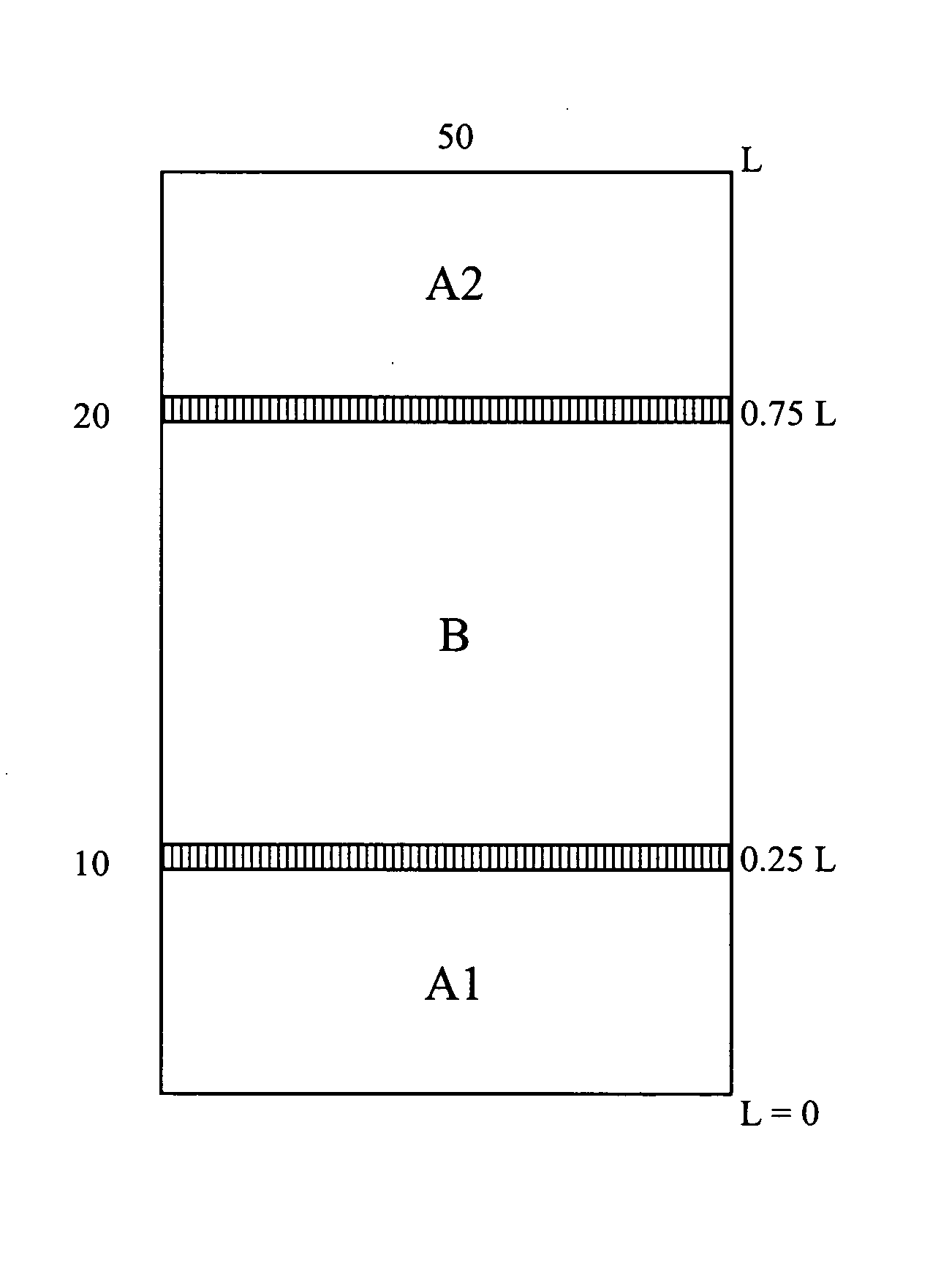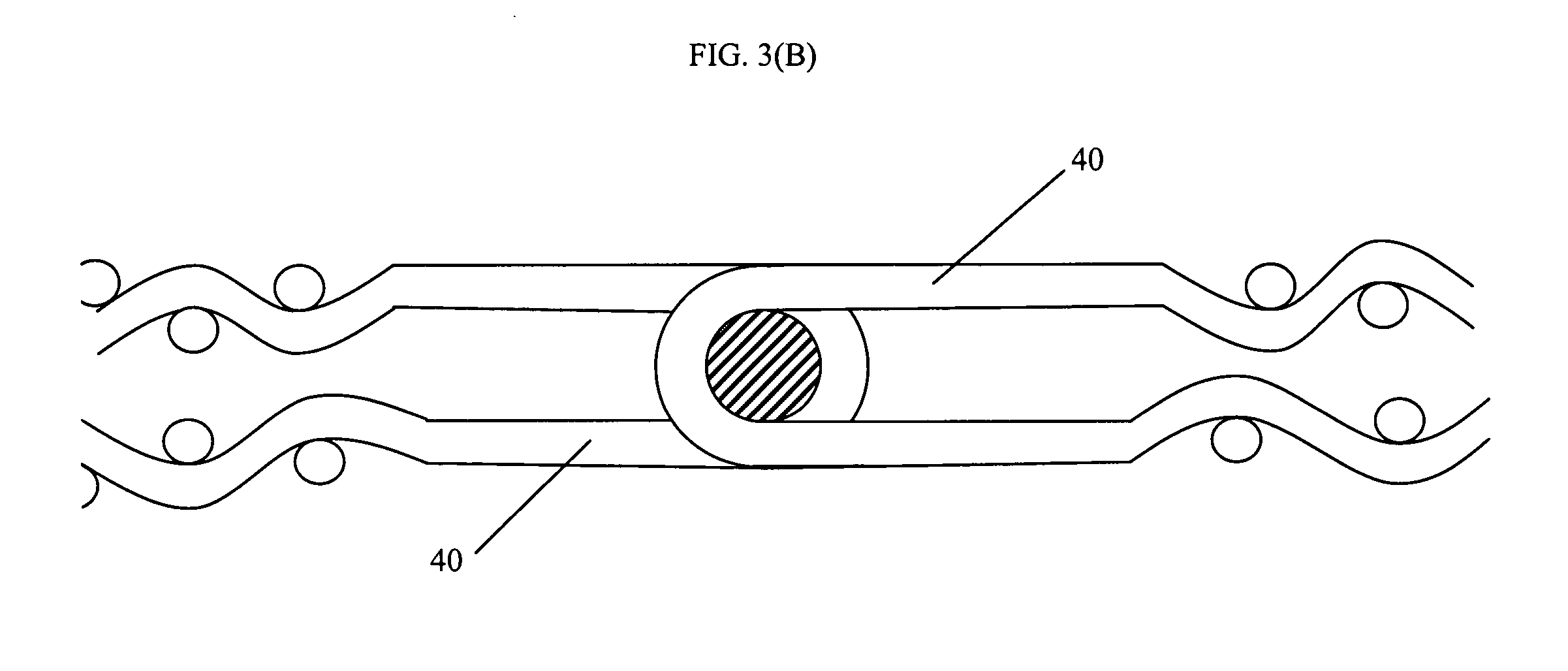Flat woven full width on-machine-seamable fabric
a fabric, machine-seamable technology, applied in the field of industrial fabrics, can solve the problems of sheet marking, non-uniform batt wear, sheet marking, compression and marking, etc., and achieve the effect of strong and reliable fabri
- Summary
- Abstract
- Description
- Claims
- Application Information
AI Technical Summary
Benefits of technology
Problems solved by technology
Method used
Image
Examples
Embodiment Construction
[0044]The fabrics disclosed herein relate to industrial fabrics as aforesaid including but not limited to fabrics or paper machine clothing used in sections of a papermaking machine, e.g. forming, drying and / or press sections. However, the preferred embodiments described herein refer to a press fabric used in the press section of a papermaking machine.
[0045]According to one aspect of the invention, a full width base fabric structure of twice the length of the final fabric is woven using a combination of chosen weave patterns and / or CD yarn densities, size or yarn types. A method of manufacture of the same according to one aspect of the invention is depicted in FIGS. 1-3B, whose description is given in more detail in the following paragraphs.
[0046]On a weaving loom having a width at least equal to or greater than W (the full width of the required final fabric), a base fabric 50 is woven from a starting position 0, at a first MD and CD yarn density and / or first weave pattern of choice...
PUM
 Login to View More
Login to View More Abstract
Description
Claims
Application Information
 Login to View More
Login to View More - R&D
- Intellectual Property
- Life Sciences
- Materials
- Tech Scout
- Unparalleled Data Quality
- Higher Quality Content
- 60% Fewer Hallucinations
Browse by: Latest US Patents, China's latest patents, Technical Efficacy Thesaurus, Application Domain, Technology Topic, Popular Technical Reports.
© 2025 PatSnap. All rights reserved.Legal|Privacy policy|Modern Slavery Act Transparency Statement|Sitemap|About US| Contact US: help@patsnap.com



